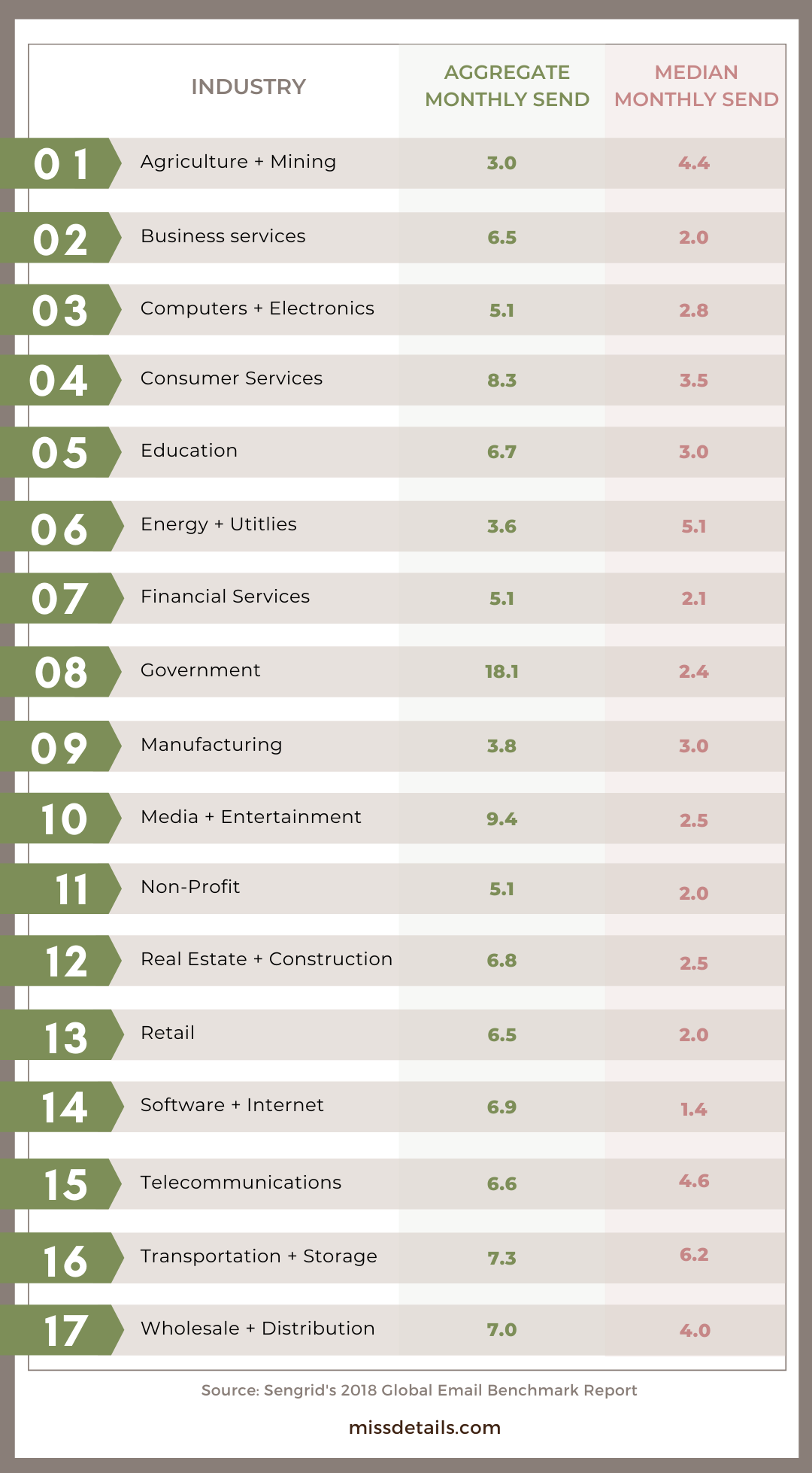When email made its way onto the burgeoning digital scene some thirty years ago, it’s unlikely that its creators guessed they had created the most powerful marketing vehicle imaginable. At the time, many thought of email as a novelty or passing fad; nowadays, some see it as an outdated relic in the age of social media.
But the numbers don’t lie: email is here to stay. With over four billion users worldwide (over half the global population), email is the easiest way to contact an entire audience simultaneously.
Furthermore, statistics show that year after year, email remains king when it comes to sales. Creative Circle reports that 60% of buyers have made a purchase as a result of a marketing email, in comparison with just 12.5% who click the “buy” button on social media.
Clearly, it’s vital for business owners to take advantage of email marketing. But how do you build up an email list, and, from there, keep your customers on it? This article will cover all of that—but first, let’s dive a little deeper into why email is such an essential tool in branding and marketing.
What’s So Special About Email Marketing?
Though it may seem quaint when compared to social media giants and other modern internet marvels, email has a few distinctive characteristics that make it the best digital marketing tool available.
Cost-Effectiveness
Not only is email marketing powerful—it’s accessible, even to the most limited budgets. Whereas print marketing and pay-per-click digital advertisements can cost you thousands of dollars, email marketing only requires you to pay for the platform you’re using, as well as the salaries of any employees who create the emails. This low cost, combined with consumers’ high purchase rates, means that email has the highest ROI of any form of marketing—an average of $38 for every $1 spent according to Constant Contact.
You Own Your Customer Information
An email list is an invaluable tool because it gives you continuous access to your customers and prospects. While a social media platform could one day decide to charge you out of the blue for your customers’ information, you own any email addresses you obtain through your business. Even if a customer unsubscribes from your emails, you’ll still have their contact information on file.
Speaking of unsubscribing: although some marketers live in fear of the unsubscribe button included in sales emails, it’s actually doing you a favor. Branding expert and creator of the Story Brand framework Donald Miller explains why: “If someone unsubscribes [from your email list], all the better. It’s more important to have a list of qualified, interested subscribers than a large number of people who never intend to buy.”
The option to unsubscribe guarantees that anyone seeing your email marketing genuinely wants to see it—as opposed to those annoying advertisements that pop up on your social media pages unrequested.
Brand Awareness
Consistently sending marketing emails is one of the most effective ways to create visibility and awareness around your brand. After all, most people check their email accounts multiple times per day, so you can be confident that they are at the very least seeing your brand’s name pop up regularly. This means even if someone on your email list doesn’t make a purchase for a while, they will be more likely to remember your brand when they do need the services you provide.
Automation
The seemingly endless options for building automated email sequences make email marketing a terrific example of working “smarter, not harder.” Though the available options vary by provider, most platforms allow for email sequences that automatically send after a certain trigger, giving you the opportunity to convert customers who otherwise may have missed the boat.
For instance, you might set up a re-engagement sequence to automatically send to any former customer who hasn’t made a purchase within a certain amount of time. These emails serve as a friendly reminder of your brand’s existence to a customer whose mind you might have otherwise slipped.
Personalization
Along with options for automation, most email platforms allow for a high level of personalization in marketing. A recent study shows that 71% of customers are more likely to read brand emails that include some amount of personalization. This can be as simple as setting the email to plug in the customer’s first name in the greeting, but you can also take it a step further and segment your emails based on your customers’ past purchases and activity.
Laws of Attraction: How To Build Your Email List
Hopefully you now have a sense of why email is such a unique and powerful marketing tool. But the best sales emails in the world won’t do you any good if you don’t have anyone to send them to. Let’s review a few ways you can build an extensive email list and gain instant access to your customers’ attention.
Calls To Action
The best way to ensure you build a long list of email contacts is to make it as easy as possible for your customers to sign up for your brand’s emails. You should ideally have multiple calls to action (CTA’s) on different pages of your website encouraging visitors to register for email updates from your brand.
It’s a great idea to use a double opt-in process in your email capture. This prompts your email provider to send a confirmation message to your new subscribers that has them verify their sign-up. A double opt-in process ensures all your subscribers want to receive your emails, and also helps build trust between you and your audience.
Incentives
A common and effective method for obtaining email addresses is to offer the customer something in return for their contact information. Often this takes the form of an opt-in or lead magnet, particularly in service industries—some sort of free resource a customer can obtain by giving you their email address. This might be a PDF, an e-book, a training video, or an app. For instance, Miss Details offers freebies such as quizzes, templates, and even robust marketing guides.
There are other ways to incentivize potential subscribers as well:
- Coupons and discounts are common in product industries, but they’re also useful tools for restaurants—for instance, you might offer a coupon for a free drink or dessert in exchange for a customer’s email address.
- A promise of exclusivity is another great motivator. Some brands offer the people on their mailing list early access to certain offers, events, and promotions.
Whatever incentive you decide to use, make sure to regularly promote it on your website and social media channels. This will expand your email list and drive traffic to your brand.
Welcome Sequence
A good welcome sequence is the most important automated email sequence a brand can have. When a customer provides you with their email address, you’ll want to take action right away to seal the deal. Your platform should immediately send them an initial email thanking them for subscribing and reviewing the benefits of being on your list.
From there, the welcome sequence can continue over the next few days or weeks. Some other emails in your welcome sequence might include:
- A personal message from your brand’s founder
- The story of how your brand was created
- An invitation to follow your brand on social media channels
- A low-cost or “tripwire” offer or discount available only to new subscribers for a limited time
A well-crafted welcome sequence will give new subscribers confidence in their decision to engage with your brand, and can serve as the foundation for a lasting relationship.
Regular Maintenance: How To Nurture Your Email List
Once you’ve managed to build up a solid list of contacts, the next step is to maintain that list. Here are a few strategies for keeping your subscribers engaged with your brand.
Be Consistent, But Don’t Nag
It can be a difficult balance to figure out how frequently to email your subscribers. Email your list too frequently and your customers will feel pestered; email your list too rarely and you risk your customers forgetting about your brand. How many emails your audience can handle will depend on your industry, and may require testing.
Although a few years old Sendgrid’s breakdown of monthly sends by industry may help.

Go Beyond Sales
No matter how frequently you email your customers, it’s crucial that each email contains real value for your audience and contributes to positive expectations for your brand. Sending out emails promoting your offers is important, but not every email you send should be related to sales.
You might send out a series of emails educating your audience on the benefits of the services you just so happen to provide; alternatively, you might send out an entertaining email with a personal update or anecdote. Think of these emails as opportunities for your brand to connect emotionally with your audience, using your core values and brand personality to inspire helpful, valuable content.
Stepping beyond sales signifies to your audience that you have a genuine interest in your relationship with them.
Choose “A” Or “B”
Most major email platforms allow for some level of A/B testing, and you’d be remiss not to take advantage of it. Access to data about how your customers are interacting with and responding to your emails is invaluable in future marketing decisions.
The variables you’ll be able to test will depend on your email platform, but here are a few common examples:
- Subject lines and preheader text
- “Send” line (who the email is listed as being from)
- Plain text emails vs. HTML
- Inclusion of graphics
- Time of day the email is sent
Note that some of your tests might not yield any results. Not only is that normal, it’s useful information in itself. For instance, if your audience opens your brand’s emails at the same rate regardless of whether you send them at 8:00 am or 5:00 pm, it means you have one less variable to think about when setting up sequences.
Just remember to stick to best practices for scientific research and only test one variable at a time. If you try to test out two or more variables at once, you’ll have no way of knowing which variable it was that affected an email’s performance.
Be aware as well that A/B testing is a continuous process. Audiences evolve over time, and emails that perform well now may not perform well three, five, or ten months from now. It’s important to continue to run tests and analyze your audience data to keep your brand as engaged as possible with your customers.
Final Thoughts
Far from being an early-internet relic, email is one of the most powerful marketing tools available to any brand today. If you can build up a sizable list of contacts and consistently nurture them through both automated and personalized sequences, your brand will stay visible and make meaningful conversions.
Your brand’s email strategy will depend on where you are in its overall development. Take our Brand Cycle Quiz for even more clarity!
Don’t want to miss out on our articles and insights?
Sign up for the Miss Details newsletter today.
About Miss Details
Founded by Tanya Gagnon in 2004, Miss Details is a full-service branding and design firm which helps entrepreneurs and companies launch, adjust and reinvent key aspects of their branding and business marketing strategy. With a background in all aspects of interior and experiential design and a passion for data-backed design, Tanya leads the Miss Details team to guide her clients through everything from a refreshed website to a full rebranding, helping them put the pieces together to create a consistent, authentic, unique brand image.



